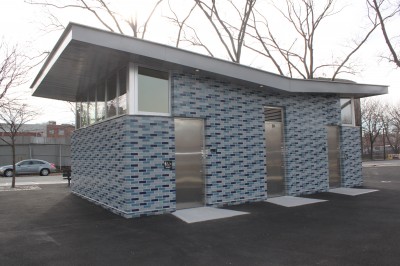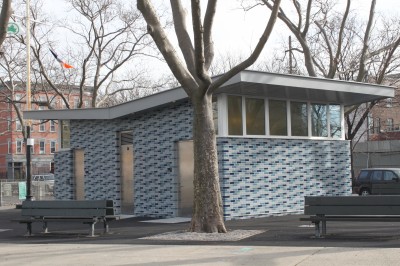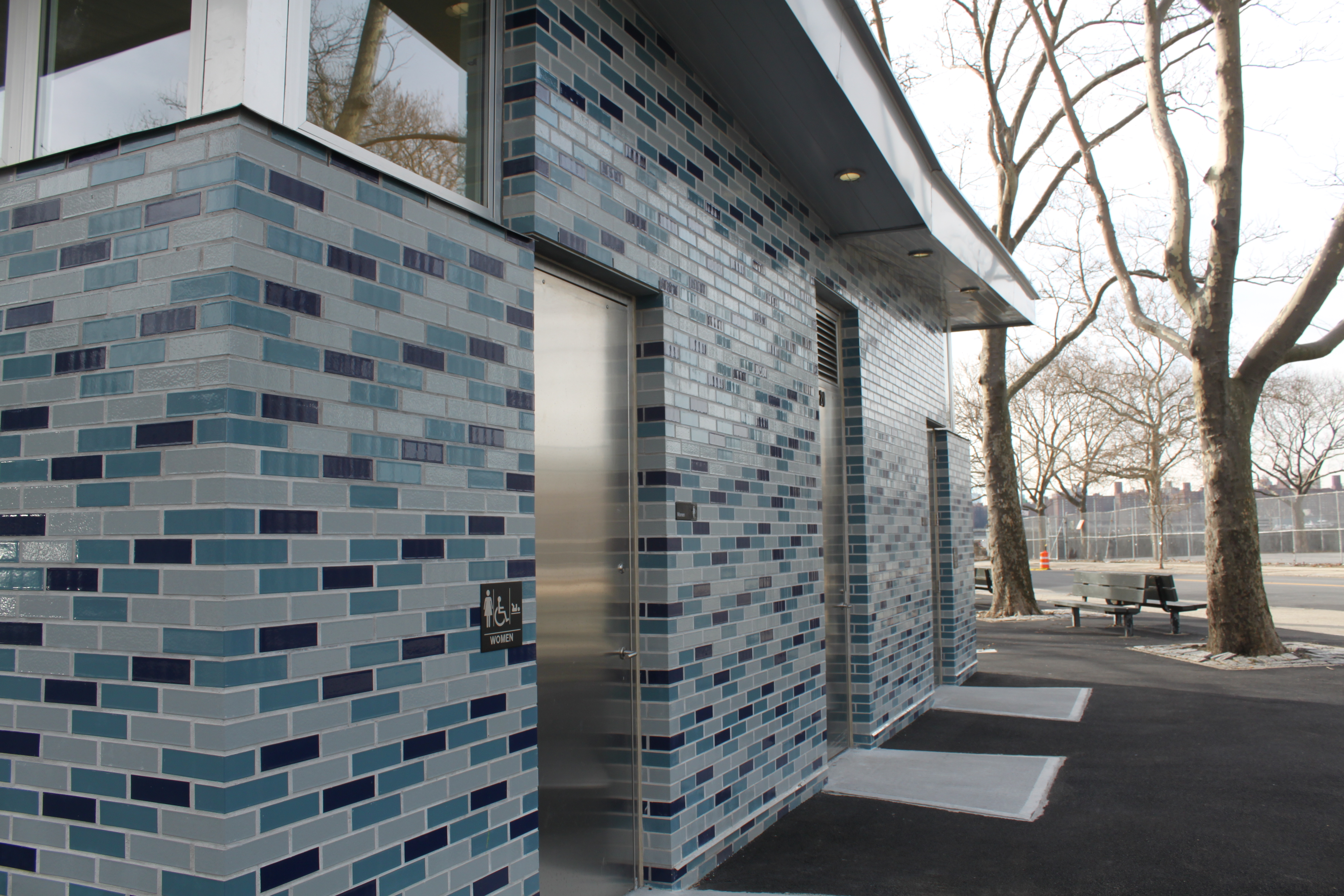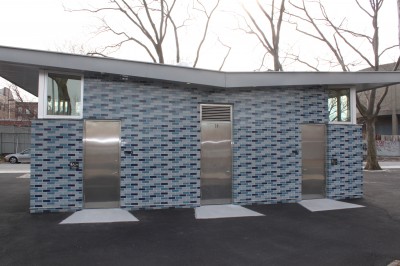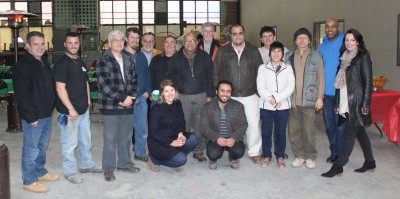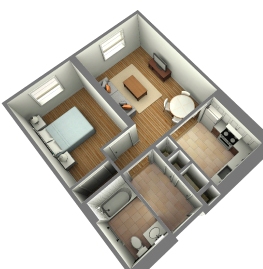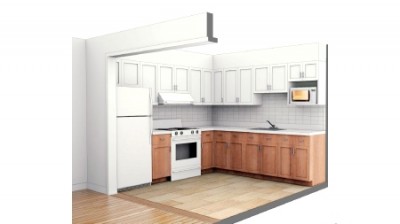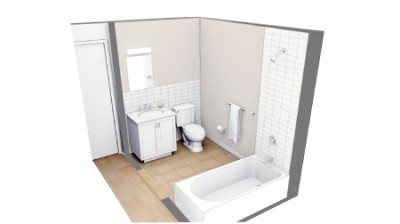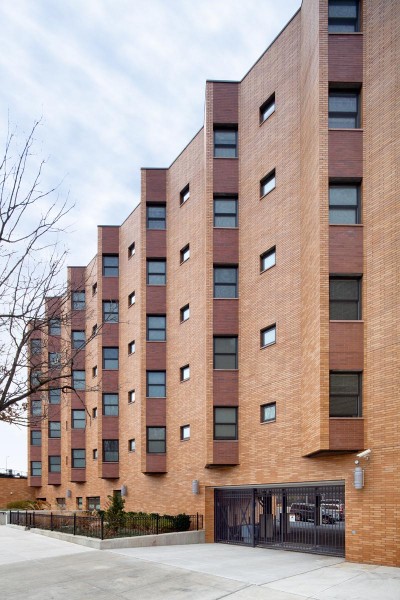Very Exciting News from Mayor Bloomberg!
Tags: adApt NYC, Affordable Housing, Green Building, High Quality Construction, Micro-unit apartment, modular building, My Micro NY, Non Combustible Construction, offsite construction, sustainable construction
www.nyc.gov
FOR IMMEDIATE RELEASE
PR- 032-13
January 22, 2013
MAYOR BLOOMBERG ANNOUNCES WINNER OF adAPT NYCCOMPETITION TO DEVELOP INNOVATIVE MICRO-UNIT APARTMENT HOUSING MODEL
Monadnock Development, Actors Fund Housing Development Corporation, and nARCHITECTS Will Build City’s First Micro-Unit Apartment Building Using Innovative Design and Modular Construction
40 Percent of 55 New Units in ‘My Micro NY’ at 335 East 27th Street Will be Available to Low- and Middle-Income New Yorkers
Mayor Michael R. Bloomberg, Deputy Mayor for Economic Development Robert K. Steel and Department of Housing Preservation and Development Commissioner Mathew M. Wambua announced today that the winner of the adAPT NYC Competition is a development team composed of Monadnock Development LLC, Actors Fund Housing Development Corporation, and nARCHITECTS. The development team was chosen through a competitive Request for Proposals to design, construct and operate the city’s first micro-unit apartment building on a City-owned site at 335 East 27th Street in Manhattan. The development team’s ‘My Micro NY’ project will create 55 new micro-units, 40 percent of which will be affordable beyond the competitive market rents, that are designed to optimize space and maximize the sense of openness. ‘My Micro NY’ will be the first multi-unit building in Manhattan developed using modular construction, with the modules prefabricated locally by Capsys at the Brooklyn Navy Yard. The Mayor made the announcement at the Museum of the City of New York and was joined by Monadnock Development president Nicholas Lembo, Actors Fund Housing Development Corporation president Scott Weiner and nARCHITECTS principal Eric Bunge.
“New York’s ability to adapt with changing times is what made us the world’s greatest city – and it’s going to be what keeps us strong in the 21st Century,” said Mayor Bloomberg. “The growth rate for one- and two-person households greatly exceeds that of households with three or more people, and addressing that housing challenge requires us to think creatively and beyond our current regulations.”
adAPT NYC is a pilot program that was launched in July 2012 through a Request for Proposals to develop a new model of housing – micro-units. The proposals were evaluated on several criteria, including innovative micro-unit layout and building design. The ‘My Micro NY’ proposal excelled in this category, with features like generous 9’-10” floor-to-ceiling heights and Juliette balconies that provide substantial access to light and air. The micro-units developed as part of this pilot will measure between 250 and 370 square feet.
“Mayor Bloomberg is committed to expanding the housing options available to New Yorkers, and with the results of the adAPT project we’ve clearly seen that developers believe there is a robust market for smaller apartment sizes,” said Deputy Mayor for Economic Development Robert K. Steel. “Today’s announcement is a milestone for new housing models.”
“The remarkable number of high-quality responses to the adAPT NYC RFP validates the position that developing micro-unit living is both financially and physically feasible in the New York City landscape,” said HPD Commissioner Mathew M. Wambua. “Monadnock, nARCHITECTS and the Actors Fund HDC came through with an inventive and striking interpretation of the micro-unit concept. The team’s ‘My Micro NY’ proposal is reflective of our objectives and signifies tremendous promise for this housing model. Remarkable things can be accomplished when thinking carefully about how people live and how we can program small spaces to integrate individuals’ lifestyles with common, or shared, space. This is the result when government acts as a catalyst for private sector innovation.”
“The Monadnock proposal is compelling because it clearly demonstrates how careful planning and design innovation can transform a building into a community and a small unit into a home”, said Planning Commissioner Burden. “The adAPT RFP fulfills its promise by providing a tangible new housing option, which has the potential to broaden housing choices for New Yorkers.”
“Our buildings should be built to meet the needs of New Yorkers, and as our population continues to grow and evolve, so must our housing stock,” said Commissioner LiMandri. “The Monadnock proposal is a fresh, innovative design that recognizes the changes in how we live as a society and presents a safe, reasonable housing option for those who want to call New York City home.”
Designed by nARCHITECTS, ‘My Micro NY’ is an elegant building distinguished by the creative use of setbacks and subtle changes in the color of the brick cladding. A multi-purpose and transparently-glazed space on the ground floor will be programed for rehearsals, performances, lectures and other creative activities, in addition to a café. Inside, the efficient apartment design includes ample storage, such as a 16’-long overhead loft space and a full-depth closet. Compact kitchens contain a full-height pull-out pantry, a full-height fridge, range, and space for a convection microwave. The property will include amenities that invite resident interaction, such as an attic garden, a ground-floor porch with picnic tables, den areas, and a multi-purpose lounge. Programmed interior space comprises 18 percent of the building’s gross square footage. The building will also have a laundry room, residential storage, a bike room, and fitness space.
While the variation in unit sizes and configuration is efficiently limited, minor shifts in the building’s volume, and changes in orientation of units, and location and type of windows generate spatial diversity. Each unit is comprised of two distinct zones: a ‘toolbox’ containing a kitchen, bathroom and storage and a ‘canvas’ providing ample, well-proportioned flexible space allowing for individual expression, and serving as the primary living and sleeping area. ‘My Micro NY’ unites a spectrum of scales ranging from efficiently designed kitchens to the organization of the apartments and common space, all in a simple yet iconic building.
The property will include common spaces with amenities which also emphasize a creative use of space, including a rooftop garden, shared lounge areas on nearly every floor to invite resident interaction, and an 8th floor deck for socializing or group fitness activities that has an additional multi-purpose lounge that can seat twenty for dinner or up to forty for a standing room event. The ‘My Micro NY’ building will also have a laundry room, a storage room, a bike room, and a fitness room.
Highly-skilled workers will prefabricate the building modules at Capsys’s indoor facility in the Brooklyn Navy Yard. Capsys is the first NYC-approved manufacturer of prefabricated modules. After site work, foundations, utilities, and the construction of the ground floor is completed using traditional methods, the modules would arrive on the site with fixtures and finishes already installed. The modules would be hoisted into place in approximately two weeks and the brick facades would be built on the development site. Residents are expected to move in by September 2015.
“We are grateful to the City and the Department of Housing Preservation and Development for selecting our proposal from such a competitive pool,” said Alphonse Lembo of Monadnock. “We’ve built market-rate and affordable housing in the five boroughs that have given people places to live and make memories, but this is an important opportunity to change the way we think about living space in an urban setting.”
“We are proud to be a member of the development team selected by the Department of Housing Preservation and Development to be at the vanguard of implementing Mayor Bloomberg’s vision to provide a new and innovative option for attractive affordable housing that responds to the changing demographics and preferences of New York City’s residents,” said Scott Weiner, President of the Actors Fund Housing Development Corporation.
“We’re thrilled at the chance of designing a housing prototype that will give New Yorkers in small spaces a sense of living in a larger social fabric” said Eric Bunge, Principal of nARCHITECTS.
The ‘My Micro NY’ building will provide housing to one- and two-person households across a variety of incomes. Twenty percent of the apartments (eleven units) will be reserved for households with incomes not exceeding 80 percent of the Area Median Income (AMI); nine percent (5 units) will be reserved for households with incomes not exceeding 145 percent of AMI; and eleven percent (6 units) will be reserved for households with incomes not exceeding 155 percent of AMI. The remainder of the units will be market rate, along with one superintendent’s unit. The development team was able to achieve affordability in the micro-units for low- and middle-income households without utilizing any direct City subsidy or financing, in part through its use of the modular design, which can significantly reduce a project schedule, resulting in savings on financing and conventional construction costs.
While reviewing the proposals, the City consulted with members of the adAPT NYC Advisory Board, which was created last year. The Board is composed of 12 leaders in architecture and design, housing, and economic development and was assembled to provide feedback on top proposals. Committee members include:
- Barry Bergdoll, Chief Curator of Architecture & Design, Museum of Modern Art
- Rafael Cestero, President and CEO, Community Preservation Corporation
- Tom Eich, Partner, IDEO
- Paul Goldberger, Contributing Editor, Vanity Fair
- Toni Griffin, Professor of Architecture and Director, J. Max Bond Center at City College of New York
- Robert Hammond, Co-Founder and Executive Director, Friends of the High Line
- Bjarke Ingels, Architect and Founding Partner, BIG-Bjarke Ingels Group
- Janel Laban, Executive Editor, Apartment Therapy
- Maya Lin, Artist, Maya Lin Studio
- Richard Plunz, Director of the Urban Design Program, Columbia University’s Graduate School of Architecture, Planning and Preservation
- Robert Selsam, Senior Vice President, Boston Properties
- Christian Siriano, Fashion Designer, Christian Siriano
The winning proposal and four other notable proposals will be featured in an upcoming exhibit at the Museum of the City of New York called Making Room: New Models for Housing New Yorkers. The exhibit, which is co-presented by the Museum and the Citizens Housing & Planning Council, features creative ideas for how to accommodate the changing demographics of New York City’s population.
“With this exhibition, the Museum of the City of New York and the Citizens Housing & Planning Council are giving New Yorkers a glimpse into the future of housing in our city,” said Susan Henshaw Jones, Ronay Menschel Director of the Museum of the City of New York. “We are excited to showcase proposals from the adAPT NYCCompetition and to foster a discussion of solutions to the city’s emerging housing needs.”
The adAPT NYC Competition was created to introduce additional choices within New York City’s housing market to accommodate the city’s growing population of one- and two-person households. Currently New York City has 1.8 million one- and two-person households, but only one million studios and one-bedrooms. The City’s housing codes have not kept up with its changing population, and currently do not allow an entire building of micro-units. Under this pilot program, Mayor Bloomberg will waive certain zoning regulations at a City-owned site at 335 East 27th Street to test the market for this new housing model. The adAPT NYC RFP was downloaded more than 1,600 times in hundreds of cities domestically and abroad, and generated 33 proposals by the submission deadline – making this the largest response received by HPD for a housing project. It is expected that the project will complete the Uniform Land Use Review Procedure for disposition of City-owned land in the fall and break ground on construction at the end of 2013.
The adAPT NYC initiative is part of Mayor Michael R. Bloomberg’s New Housing Marketplace Plan. The New Housing Marketplace Plan is a multi-billion dollar initiative to finance 165,000 units of affordable housing for half a million New Yorkers by the close of Fiscal Year 2014. To date, every dollar invested by the City, the Plan has leveraged $3.42 in private funding for a total commitment of more than $20 billion to fund the creation or preservation of over 140,920 units of affordable housing across the five boroughs.
http://www.nyc.gov/portal/site/nycgov/menuitem.c0935b9a57bb4ef3daf2f1c701c789a0/index.jsp?pageID=mayor_press_release&catID=1194&doc_name=http%3A%2F%2Fwww.nyc.gov%2Fhtml%2Fom%2Fhtml%2F2013a%2Fpr032-13.html&cc=unused1978&rc=1194&ndi=1


